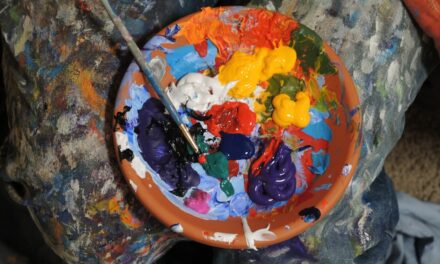Pastel art, with its rich history and vibrant hues, has captivated artists and art enthusiasts alike for centuries. Originating in the 16th century, pastels have evolved from a mere drawing medium to a respected form of fine art. The unique qualities of pastels—softness, blendability, and the ability to produce both delicate and bold effects—make them an appealing choice for artists seeking to explore colour in a tactile manner.
Unlike traditional paints, pastels consist of pure pigment combined with a binder, allowing for a luminosity that is often unmatched in other mediums. This characteristic enables artists to create works that are not only visually striking but also imbued with a sense of immediacy and intimacy. The allure of pastel art lies not only in its aesthetic appeal but also in its versatility.
Artists can employ pastels in various styles, from impressionistic landscapes to detailed portraits, each benefiting from the medium’s unique properties. The tactile nature of pastels invites experimentation, encouraging artists to engage with their materials in a direct and personal way. As we delve deeper into the world of pastel art, it becomes evident that understanding colour—its nuances, combinations, and applications—is essential for any artist wishing to harness the full potential of this medium.
Summary
- Pastel art is a versatile medium that uses dry pigment to create vibrant and expressive artwork.
- A diverse pastel palette is important for achieving a wide range of colours and effects in pastel art.
- Must-have colours for expanding your pastel palette include a variety of shades and tints to create depth and dimension in your artwork.
- Exploring new shades and tints allows artists to expand their creativity and experiment with different colour combinations.
- Mixing and blending techniques are essential for creating a varied palette and achieving smooth transitions between colours in pastel art.
Understanding the Importance of a Diverse Pastel Palette
Enhancing Visual Impact and Creative Expression
A well-rounded palette not only enhances the visual impact of a piece but also provides the artist with the tools necessary to convey mood, atmosphere, and depth. By incorporating a variety of shades, artists can evoke emotions and create a sense of realism or abstraction that resonates with viewers.
The Power of Colour Theory
Moreover, understanding the importance of colour theory is fundamental when building a diverse pastel palette. The interplay between colours can dramatically alter the perception of a work. For instance, warm colours can evoke feelings of warmth and comfort, while cool colours may impart a sense of calm or distance.
A Comprehensive Palette: A Key to Artistic Communication
By thoughtfully selecting and combining colours, artists can manipulate these emotional responses, guiding the viewer’s experience. Thus, investing time in developing a comprehensive pastel palette is not merely an aesthetic choice; it is an essential aspect of artistic communication.
Must-Have Colors for Expanding Your Pastel Palette
When expanding a pastel palette, certain colours are indispensable for creating a versatile foundation. A selection of primary colours—red, blue, and yellow—forms the basis for mixing an array of secondary and tertiary hues. These foundational colours allow artists to explore a spectrum of possibilities, from vibrant oranges and greens to subtle purples and browns.
Additionally, including a range of neutral tones such as greys, whites, and blacks can provide balance and depth to compositions. Beyond the basics, incorporating earth tones is vital for artists who wish to depict natural scenes or create realistic portraits. Colours like ochre, sienna, and umber can ground a piece and add warmth or coolness as needed.
Furthermore, pastel shades such as soft pinks, lavenders, and mint greens can introduce a delicate quality to artworks, perfect for capturing the essence of spring or evoking a sense of nostalgia. By thoughtfully curating a selection of must-have colours, artists can ensure they are well-equipped to tackle any subject matter with confidence and creativity.
Exploring New Shades and Tints
The exploration of new shades and tints is an exciting aspect of working with pastels. Artists often find inspiration in the world around them—nature’s changing seasons, urban landscapes, or even the subtleties of human emotion can all inform colour choices. By experimenting with different shades and tints, artists can discover unique combinations that breathe life into their work.
For instance, adding white to a colour creates a tint that softens its intensity, while mixing with black produces a shade that deepens its richness. In addition to traditional colour mixing techniques, artists can also explore the use of complementary colours to create striking contrasts. For example, pairing a vibrant orange with its complementary blue can result in a dynamic visual tension that draws the viewer’s eye.
This exploration not only enhances an artist’s palette but also encourages them to think critically about colour relationships and their impact on composition. Embracing new shades and tints allows artists to push boundaries and develop their unique style while keeping their work fresh and engaging.
Mixing and Blending Techniques for a Varied Palette
Mastering mixing and blending techniques is essential for any artist working with pastels. The medium’s inherent softness allows for seamless transitions between colours, enabling artists to create depth and dimension in their work. One effective technique is layering—applying one colour over another to build richness and complexity.
This method allows artists to create subtle gradients or bold contrasts depending on their desired effect. Blending can also be achieved through various tools such as fingers, blending stumps, or even soft cloths. Each tool offers different results; for instance, using fingers may produce softer edges while blending stumps allow for more precision.
Additionally, experimenting with different pressures when applying pastels can yield varied textures—from smooth washes to rougher strokes that add character to a piece. By honing these techniques, artists can develop a varied palette that enhances their artistic voice and elevates their work.
Utilizing Complementary and Contrasting Colors
Creating Focal Points
This technique is particularly effective in creating focal points within a piece, guiding the viewer’s gaze towards specific areas. Contrasting colours also play an essential role in establishing mood and atmosphere within an artwork. By juxtaposing warm tones against cool ones or light shades against dark ones, artists can create tension or harmony depending on their intent.
Adding Depth and Inviting Engagement
This interplay not only adds depth but also invites viewers to engage more deeply with the work. Understanding how to effectively utilise complementary and contrasting colours allows artists to manipulate perception and emotion within their pieces, ultimately enriching their artistic expression.
Mastering Colour to Enrich Artistic Expression
Tips for Selecting Quality Pastel Colors
When it comes to selecting quality pastel colours, several factors should be considered to ensure optimal results in your artwork. Firstly, it is essential to choose pastels made from high-quality pigments that offer excellent lightfastness—this ensures that your artwork will retain its vibrancy over time without fading. Professional-grade pastels typically contain higher concentrations of pigment compared to student-grade options, resulting in richer colours and smoother application.
Additionally, consider the texture of the pastels you choose. Soft pastels are known for their blendability and vibrant hues but may require more care during application due to their fragility. On the other hand, hard pastels offer greater control for fine details but may lack the same vibrancy as their softer counterparts.
A balanced selection that includes both types can provide versatility in your work while allowing you to experiment with different techniques. Ultimately, investing in quality pastels will enhance your artistic practice and contribute significantly to the overall success of your creations.
Embracing the Versatility of Pastel Artistry
In conclusion, pastel art offers an extraordinary realm of possibilities for creative expression through colour. By understanding the importance of a diverse pastel palette and incorporating must-have colours alongside new shades and tints, artists can unlock their full potential within this medium. The techniques of mixing and blending further enrich the artistic process, allowing for nuanced compositions that resonate with viewers on multiple levels.
As artists embrace complementary and contrasting colours while selecting quality materials, they cultivate a deeper connection with their work and audience alike. The versatility inherent in pastel artistry invites continual exploration and experimentation—a journey that not only enhances technical skills but also fosters personal growth as an artist. Ultimately, by embracing the myriad possibilities offered by pastels, artists can create compelling works that reflect their unique vision while celebrating the beauty of colour in all its forms.
One fascinating article to check out is An Introduction to the Art Gallery of New South Wales, Sydney, Australia. This article provides insight into the rich cultural heritage and diverse art collections housed in this renowned gallery. Exploring different art galleries can inspire and influence your own artistic creations, helping you to further develop your pastel colour choices and techniques.


